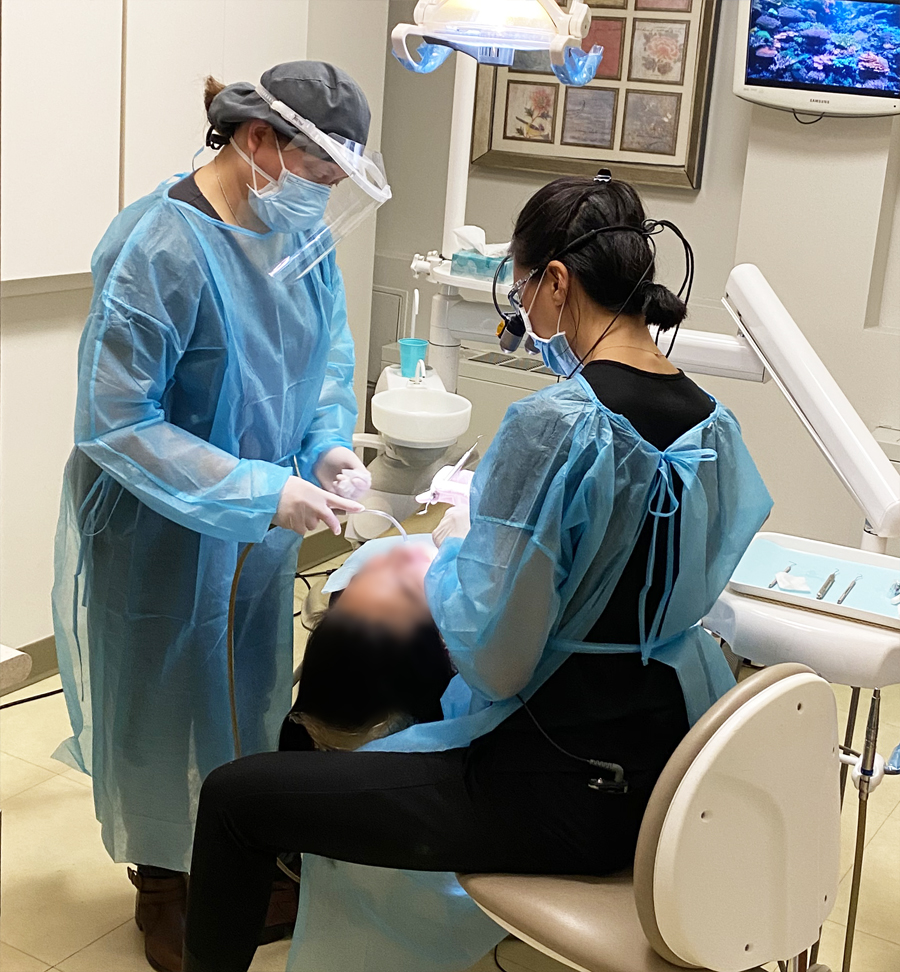Explore the Range of Dental Issues Dentists Generally Take Care Of
Dental practitioners are entrusted with resolving a broad spectrum of dental issues, each requiring specialized knowledge and techniques. From the prevalent issue of tooth cavities brought on by bacterial activity to the a lot more dangerous progression of gum illness, dental specialists need to be proficient at early detection and treatment. Tooth sensitivity, often arising from worn enamel, includes another layer of complexity, while the early identification of oral cancer can be life-saving. Additionally, misaligned attacks require tailored treatment strategies to enhance both functionality and visual appeals. What specific methods do dental experts use to take care of these varied difficulties efficiently?
Cavities and Dental Cavity
Dental caries, additionally known as oral cavities, are caused by the demineralization of tooth enamel due to acid-producing bacteria in the mouth. If left without treatment, dental caries can lead to considerable dental issues, consisting of infections and tooth loss.
To identify dental caries and dental cavity, dental professionals utilize a mix of aesthetic examinations, oral X-rays, and occasionally laser fluorescence gadgets. Treatment alternatives vary depending upon the seriousness of the decay. Early-stage tooth cavities may be handled with fluoride treatments that aid remineralize the enamel. For advanced decay, a dental expert might need to eliminate the endangered tissue and recover the tooth with dental fillings made from materials such as composite material, amalgam, or porcelain.
Precautionary steps are paramount in combating dental caries and dental caries. Routine oral exams, appropriate brushing and flossing strategies, and a balanced diet plan low in sugary foods and beverages are essential methods that support dental wellness and lessen the danger of dental cavities.
Periodontal Condition

This causes the gums to pull away from the teeth, creating pockets that become infected. As the body's immune system combats the germs, the bone and connective tissue that hold teeth in place are broken down.
Dental professionals detect gum disease through professional evaluation and periodontal probing to gauge pocket midsts around the teeth. Treatment might entail scaling and root planing to remove tartar and bacteria from tooth surfaces and beneath the gum tissues. In severe cases, medical treatments like flap surgery or bone grafts are required to bring back dental wellness. Preserving proper dental health and regular oral check-ups are vital for stopping gum tissue illness.

Tooth Level Of Sensitivity
Beyond gum tissue condition, another usual dental issue that people often come across is tooth sensitivity. Identified by a sharp, short-term pain in response to stimuli such as warm, cool, wonderful, or acidic foods and drinks, tooth level of sensitivity can significantly influence a person's quality of life.
Furthermore, dental Recommended Reading treatments, broken teeth, and gum illness can expose the dentin. To minimize tooth level of sensitivity, dental practitioners might recommend making use of toothpaste developed for delicate teeth, fluoride treatments to strengthen enamel, or dental bonding to cover subjected dentin.
Ultimately, resolving tooth sensitivity needs a detailed approach that consists of both safety nets and targeted treatments to ease pain and shield the dental structures.
Dental Cancer
Oral cancer cells, a significant and possibly lethal condition, usually flies under the radar in routine dental care conversations. This kind of cancer can influence any component of the oral tooth cavity, consisting of the lips, tongue, cheeks, flooring of the mouth, soft and difficult palates, sinuses, and throat. Early detection is important for effective therapy, yet lots of instances are identified at sophisticated phases because of subtle preliminary symptoms.
Misaligned Bites
Misaligned bites, likewise called malocclusions, are an usual dental issue that can considerably influence both oral health and general quality of life next - dentist eugene oregon. These problems happen when the upper and reduced teeth do not align appropriately, resulting in troubles in attacking, chewing, and also talking. Malocclusions can be identified right into different types, consisting of overbites, underbites, crossbites, and open attacks, each presenting distinct challenges that require tailored treatment techniques
The reasons of misaligned bites vary and can consist of genetic aspects, very early loss of baby teeth, thumb sucking, and injuries to the jaw. Symptoms commonly include discomfort or discomfort in the jaw, constant biting of the inner cheeks, and an increased threat of tooth degeneration and periodontal condition as a result of trouble in preserving oral Full Report health.
Dental experts and orthodontists employ a variety of treatments to attend to misaligned attacks, from clear aligners and standard dental braces to advanced procedures in extreme situations. Early diagnosis and therapy are vital to stop problems such as temporomandibular joint (TMJ) disorders and abnormal endure teeth. With extensive assessment and individualized treatment strategies, oral experts play a pivotal function in remedying malocclusions and boosting patients' oral feature and aesthetics.
Final Thought
Dental professionals deal with a range of dental concerns, each with unique difficulties and treatment procedures. Cavities and tooth decay result from bacterial task that jeopardizes tooth enamel, while gum illness can escalate from gingivitis to extreme gum conditions. Tooth sensitivity entails discomfort from thermal stimuli, necessitating specific care. Early detection of oral cancer is vital for reliable treatment. Misaligned bites influence both dental wellness and lifestyle, typically calling for medical or orthodontic options to rectify.
To diagnose tooth cavities and tooth decay, dental experts use a mix of visual assessments, oral X-rays, and sometimes laser fluorescence devices.Beyond periodontal disease, an additional common oral problem that clients frequently come across is tooth sensitivity. Furthermore, dental procedures, cracked teeth, and gum tissue illness can expose the dentin. To alleviate tooth sensitivity, dental practitioners may suggest making use of toothpaste formulated for delicate teeth, fluoride therapies to reinforce enamel, or oral bonding to cover exposed dentin. Tooth cavities and tooth degeneration result from microbial activity that jeopardizes tooth enamel, while periodontal illness can intensify from gingivitis to extreme periodontal problems.